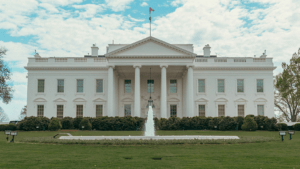
Canada Appeals for International Firefighting Aid
June 09, 2025: Canada has issued an international appeal for firefighting support as wildfires intensify across multiple provinces

July 23, 2021: A volatile environment for government bonds reflects a highly uncertain future for the U.S. economy, pointing to slower growth and stubborn inflation.
Post burst higher this year that scared markets, Treasury yields have decreased sharply as investors have switched their focus from tensions about price increases to the potential that the rapid burst in after the pandemic activity could begin to slow down.
In the 1970s, the mix of higher prices and lower growth is known as “stagflation,” a derogatory that has garnered little attention since then as inflation has remained tame over the past decades.
Although, the word is with more and more these days as the growth picture gets cloudier.
“The market trades on the stagflation theme,” said Aneta Markowska, a chief financial economist at Jefferies.
“There’s the idea that these price increases are going to cause demand destruction, cause a policy mistake, and ultimately that slows growth,” she added.
For her part, Markowska thinks the trade that sent 10-year Treasury yields tumbling from a peak of around 1.75% in late March to about 1.18% earlier this week was a mistake. Yields trade opposite prices, so a slump means that investors buy up bonds and push prices higher.
She sees a strong consumer and an imminent eruption in supply, reversing the current bottleneck that has pushed prices to their highest levels since before the 2008 financial crisis, as generating plenty of momentum to keep growth cooking without causing runaway inflation. Markowska sees the Federal Reserve staying on the sidelines until at least 2023; despite recent market pricing, the central bank will begin raising rates in late 2022.
“Consensus is projecting 3% growth. We could grow 4% to 5% next year,” Markowska said. “Not only is the consumer still very healthy, but you’re going to have massive inventory restocking at some point. Even if demand comes down, supply has so much catching up to do. You’re going to see the mother of all restocking cycles.”
The bonds market, which is generally seen as the more sober component of financial markets than the go-go stock market, doesn’t seem as convinced.
As the economy has grown out of the government-imposed pandemic shutdown, GDP has been well above the 2% or so trend prevalent since the end of the Great Recession in 2009. The Covid recession was the shortest on record, and the economy has been a rocket since mid-2020.
But Collins expects the modest-growth world to return and for investors to keep yields well within that subdued range.
“The U.S. is going to continue to be a leader in global growth and economic dynamism,” he said. “But 1.5% to 2% is our speed limit on growth unless we have some productivity miracle.”
We provide the insights on leaders who are responsible for taking their organization to new heights, all the while bringing together a group of talented individuals.

June 09, 2025: Canada has issued an international appeal for firefighting support as wildfires intensify across multiple provinces

May 27, 2025: Air Canada Cuts Five U.S. Routes for Winter 2025–26, Part of Broader Cross-Border Retrenchment

May 26, 2025: Trump Freezes $2.2B in Federal Grants to Harvard Over DEI, Threatens Tax-Exempt Status.

May 14, 2025: Microsoft has announced plans to reduce its global workforce by approximately 3%, affecting roughly 10,000 employees across multiple departments.

May 13, 2025: The Trump administration is considering suspending the constitutional right of habeas corpus in a bid to accelerate mass deportations.

April 29, 2025: Donald Trump’s second term has reached the 100-day mark under sustained public skepticism, with national approval ratings